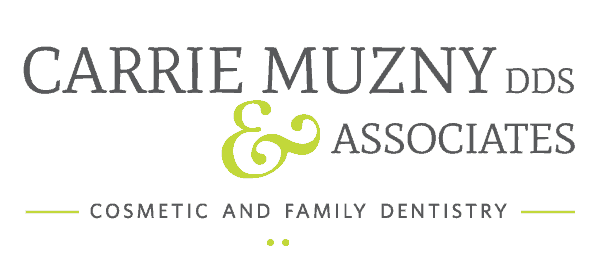
What Should I Do About My Cavity-Prevention and Treatment
Oral health and tooth care is an essential part of our everyday life. Following sound oral health habits can help keep your mouth clean and reduce your risk of unwanted issues such as cavities and tooth decay.
Let’s take a look at the steps you can take to help prevent cavities and break down what you should do when you have a cavity.
How Cavities Form
Cavities, also known as caries, are tiny holes in the hard enamel surface of the teeth. They are caused by the bacteria on the surface of the tooth creating acid out of sugars.
The bacteria form a sticky film called plaque. The acids in plaque demineralize your teeth’s enamel, the outer coating made mostly of calcium and phosphate. This erosion causes tiny holes in the enamel and once the damage spreads into the dentin layer underneath the enamel, a cavity forms.
Steps You Can Take for Cavity Prevention
1. Cut Back on Sugary Foods
The World Health Organization (WHO) identifies eating sugar as the most integral risk factor for developing cavities. Bad bacteria feed on the sugar in your mouth to form dental plaque. If the plaque is not removed by saliva, brushing or flossing, your mouth becomes more acidic and cavities start to form.
The World Health Organization recommends reducing your sugar intake to less than 10 percent of your total caloric intake. If you do eat sugar, you want to avoid snacking throughout the day. Once the sugar is gone, your enamel has a chance to remineralize but this cannot happen if you consume high amounts of sugar in your daily diet.
The same goes for sugary drinks. Avoid sipping on acidic or sugary drinks like coffee or tea throughout the day and drink water when you are done with them to help keep your mouth clean.
2. Get More Vitamin D
Vitamin D is essential to help absorb calcium and phosphate from the food you eat. Studies have shown an inverse relationship between diets high in Vitamin D and the formation of cavities.
You can get Vitamin D from dairy products like milk and yogurt. You can also get Vitamin D directly from sunlight.
3. Brush With a Fluoride Toothpaste
Fluoride plays a vital role in oral health care, as extensive research has shown that regularly brushing your teeth with fluoride toothpaste helps prevent cavities and remineralize enamel.
4. Use Sugar-Free Gum
Clinical trials have shown that chewing sugar-free gum after meals can help remineralize enamel. Particularly, gum containing xylitol has been researched thoroughly for its ability to raise the pH of plaque, stimulate saliva flow, and reduce S. mutans, the most common form of oral bacteria.
Another compound called casein phosphopeptide-amorphous calcium phosphate (CPP-ACP) has also shown the ability to reduce S. mutans. You can find both of these types of gums in stores.
5. Brush Your Teeth Regularly With the Proper Technique and an ADA-recommended Toothbrush
You will have undoubtedly heard this tip before but it is worth mentioning as it is essential to preventing cavities.
It is not only important to brush your teeth regularly, but you also want to make sure you are using the proper technique and a good toothbrush.
Here are some tips on teeth brushing techniques from the American Dental Association:
- Use a soft-bristled toothbrush and apply gentle pressure
- Place your toothbrush at a 45-degree angle against the gums. Move the brush back and forth gently in short strokes, brushing the outer inner, and chewing surfaces of the teeth.
- Use the tip of the brush to clean the inside surfaces of the front teeth, using a gentle up-and-down motion.
- Brush your tongue to remove bacteria and freshen your breath.
- Be sure to replace your toothbrush at least every 4 months.
6. Floss Regularly
Here is another essential preventative measure you have likely heard before. Our teeth have five sides, all of which need to be cleaned on a regular basis. Brushing only cleans three of these sides, so even if you brush every day, you are still missing two sides of your teeth.
Flossing allows you to reach and clean these other sides and it only takes a few minutes a day.
What to Do When You Get a Cavity
Contact a Dentist
If you suspect a cavity has formed, you should contact a dentist right away, even if you’re still a few months away from your next routine dental screening.
Treating the cavity early on will result in an easier treatment and can prevent it from growing into a worse issue.
Treat the Cavity
Once your dentist has diagnosed a cavity, you will need to treat it to prevent further damage to the rest of the tooth.
How cavities are treated will depend on your unique situation. Here are some of the common methods dentists use for cavity treatment:
- Cavity fillings: Fillings are the main treatment when a cavity has progressed beyond the enamel.
- Fluoride treatments: Professional fluoride treatments contain more fluoride than toothpaste and mouth rinses you can buy at a store. The dentist may give you a prescription for stronger fluoride to help treat your teeth after cavities.
- Crowns: A crown is a custom-fitted covering that is placed over the tooth to treat extensive decay.
- Root canals: These are often necessary when tooth decay reaches the inner material of your tooth
- Tooth extractions: This involves removing a severely decayed tooth.
Maintain Good Oral Health Habits Going Forward
Once a cavity has been treated, it’s important to establish and maintain good oral health habits going forward. By being proactive about your oral health and following the preventative steps on this list, you can help protect yourself against cavities and gum disease in the future.
Your Family Dentist in The Woodlands
Carrie Muzny DDS & Associates offers a range of preventative, restorative, and cosmetic dentistry services. From cleanings to fillings, to whitening and veneers, we provide everything you need to get the smile you deserve.
Contact us today and let us help you achieve the smile of your dreams.

